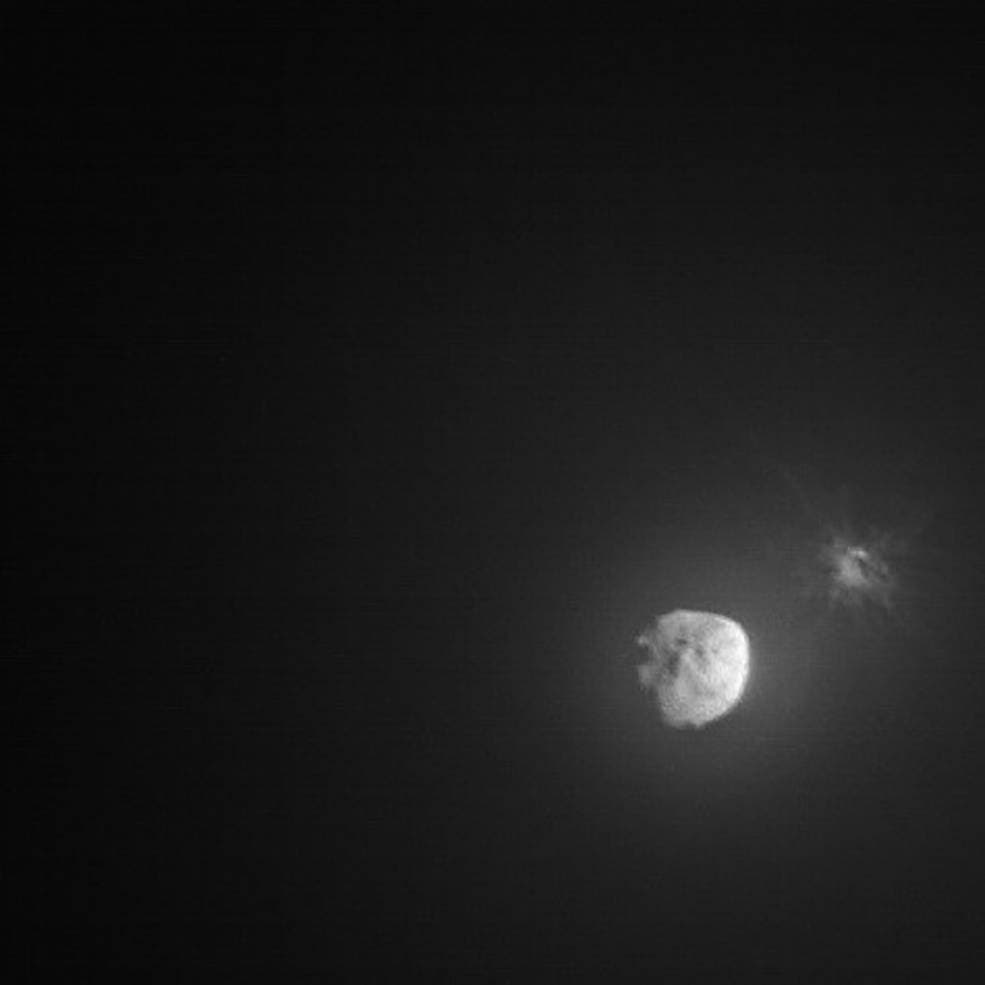On September 26, after traveling for millions of miles for nearly a year, the Double Asteroid Redirection Test (DART) spacecraft slammed into a space rock, blowing itself into smithereens while also causing some damage to its target. The asteroid in question was not a threat. It just so happened that it met a number of criteria for NASA’s first-ever planetary defense test.
Now, the results are finally in, and it seems this mission was a huge success, achieving its stated goal of significantly altering the orbit of the asteroid Dimorphos.

From movie theaters to a space telescope near you
The spacecraft had no explosive material, relying solely on its kinetic energy to deflect Dimorphos — in other words, it just smashed itself into the asteroid and pushed it. This was a conscious choice because NASA views blowing up stuff in space as too risky. In the event that a killer asteroid is detected on a collision course with Earth, detonating explosives or even nuclear weapons could break apart the asteroid into many smaller pieces that can be impossible to track and could end up impacting the planet in multiple locations.
The goal is to shorten the orbital path of Dimorphos by 10 minutes, but anything more than 73 seconds would have been considered a success by NASA, meaning it proves such an exercise is a viable strategy for deflecting a dangerous asteroid — as long as we have years of warning in advance.
Prior to the DART impact, the 170-meter-wide Dimorphos took 11 hours and 55 minutes to orbit its larger parent asteroid Didymos. But now, it takes Dimorphos 11 hours and 23 minutes to circle around Didymos. That’s an orbital alteration of 32 minutes, which is quite better than expected, perhaps because the impact showed that Dimorphos is more fragile than previously thought, consisting mostly of loosely bound gravel and ice.
This is excellent news because it suggests that even with today’s technology, we have a good chance at deflecting a body like Dimorphos. The success of this pilot test demonstrates that NASA is now capable of utilizing an impactor spacecraft to change the path of a near-Earth object that is actually on a threatening collision course with us. However, scientists are crunching new data from the DART mission every day, and there is still much to learn.
Defending the Earth
“All of us have a responsibility to protect our home planet. After all, it’s the only one we have,” said NASA Administrator Bill Nelson. “This mission shows that NASA is trying to be ready for whatever the universe throws at us. NASA has proven we are serious as a defender of the planet. This is a watershed moment for planetary defense and all of humanity, demonstrating commitment from NASA’s exceptional team and partners from around the world.”
For instance, astronomers are still busy studying imagery from the LICIACube, an Italian-made probe that detached from the DART spacecraft shortly before impact and recorded the entire impact from up close. Additionally, most ground-based telescopes that were available at the time had their lenses glued to the impact site, which will provide a steady stream of data. Finally, in about four years’ time, the European Space Agency’s Hera spacecraft is expected to rendezvous with Dirmophos and Didymos to conduct on-site investigations of the DART impact.

One of the main things scientists are currently investigating is DART’s precise momentum transferred to the cosmic body. At the moment of impact, the spacecraft traveled at about 14,000 miles per hour (22,530 kilometers per hour), blasting pebbles and dust into space. This plume, which looked for a brief moment like the tail of a comet, likely enhanced the orbital deflection, similar to how air released by a leaky balloon propels it in the opposite direction.
“For the first time ever, humanity has changed the orbit of a planetary object,” said Lori Glaze, director of the Planetary Science Division at NASA.
“As new data come in each day, astronomers will be able to better assess whether, and how, a mission like DART could be used in the future to help protect Earth from a collision with an asteroid if we ever discover one headed our way.”
But despite the success of DART, this is still just a single use case. Can a similar impactor deflect another space rock that’s, this time, made of iron? That’s a different question, and if we truly want to develop an Earth defense system, we need to be certain.
In order to be certain, more DART tests would be required in the next decade, and while a threatening near-Earth object could be pacified using a DART-like mission into the future, this would only work if we have early warning years in advance. There are more than 27,000 near-Earth asteroids the size of Dimorphos or larger that NASA is currently tracking, none of which is deemed a threat, but we need to ramp up our search to find more.
If you’d like to learn more about DART and planetary defense in general, watch our interview with planetary defense expert Mark Boslough.









